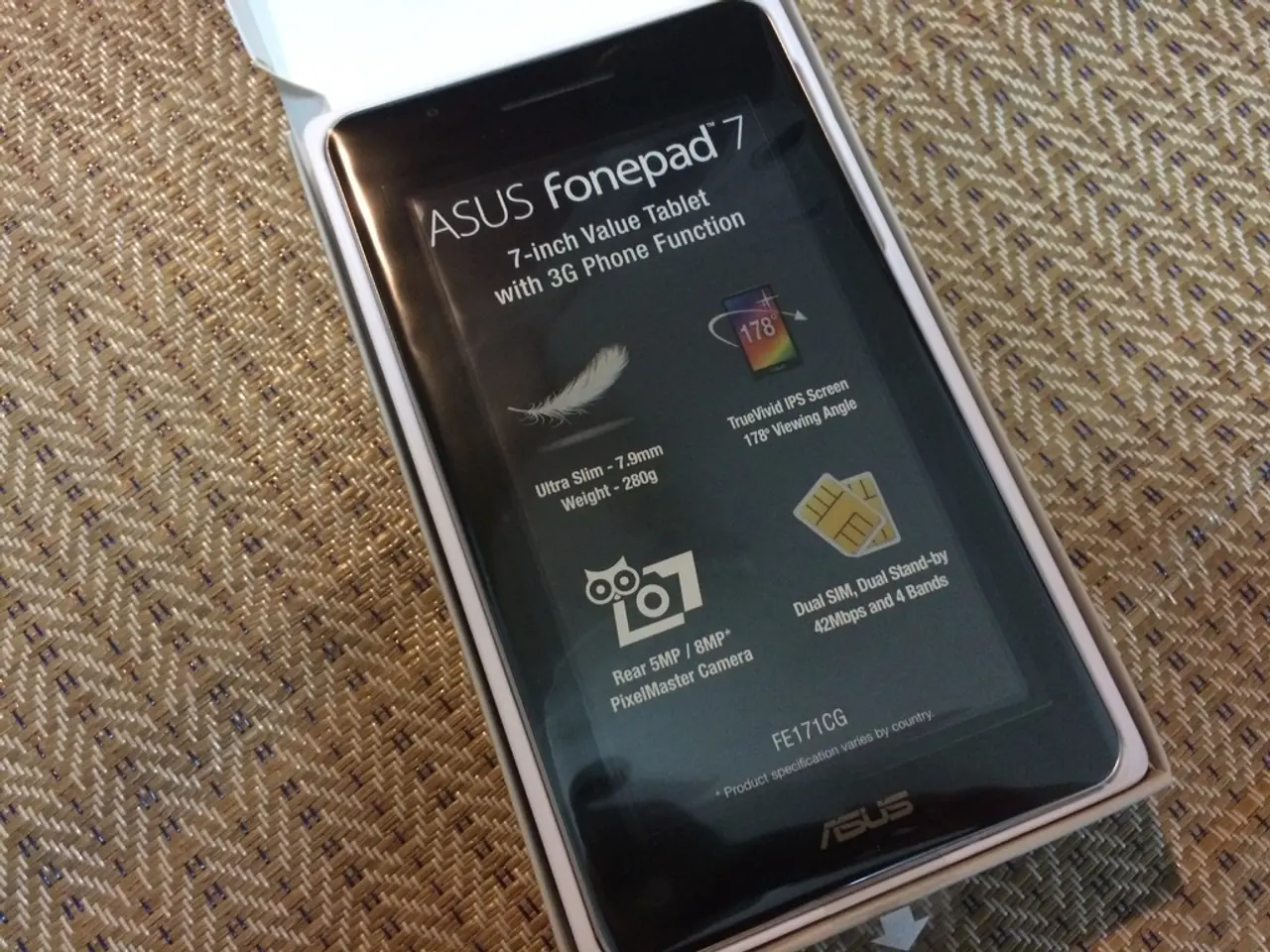In a surprising turn of events, the most formidable rival for the iPhone 16 isn't a high-end competitor, but rather the most affordable Apple smartphone in the market.
Apple Introduces the Budget-Friendly iPhone 16e: A Balance Between Power and Affordability
Apple has recently announced the iPhone 16e, a new addition to its 2025 iPhone lineup that aims to offer a budget-friendly alternative without compromising on essential features. This new device, priced at $599, sits between the flagship iPhone 16 models and the discontinued iPhone SE (3rd generation).
The iPhone 16e boasts several similarities and differences when compared to its predecessors. Like the iPhone 16, it is equipped with the powerful A18 Bionic chipset, 8GB of RAM, and a 6.1-inch Super Retina XDR display, making it capable of running Apple's new AI-driven Apple Intelligence features. However, it lacks the Camera Control button and has one less GPU core, with a 6-core CPU and 4-core GPU compared to the iPhone 16's 6-core CPU and 5-core GPU.
In terms of design, the iPhone 16e resembles the older iPhone 14, featuring a notch, while the iPhone 16 sports the newer Dynamic Island design. The iPhone 16e also sports a single 48MP main camera, a departure from the multi-lens systems of the iPhone 16. Both devices feature 12MP TrueDepth front cameras.
The iPhone 16e offers several improvements over the iPhone SE, particularly in processing power, RAM, display size, and Face ID. Unlike the SE, which used Touch ID and a smaller LCD, the 16e uses Face ID and a larger 6.1-inch OLED display, making it closer in user experience to modern iPhones.
In terms of battery life, the iPhone 16e outperforms the SE, offering up to 26 hours of video playback compared to the SE's 22 hours. The iPhone 16e also features a USB-C port, replacing the Lightning port, but it does not support MagSafe, a feature the iPhone 16 retains.
The iPhone 16e's price places it in the mid-range price bracket, starting at $599. This is $200 less than the flagship iPhone 16, making it an attractive option for those seeking a powerful iPhone without breaking the bank. However, the higher price compared to the last iPhone SE model at launch might dissuade some budget users from upgrading.
In conclusion, the iPhone 16e offers substantial upgrades over the previous iPhone SE, particularly in processing power, RAM, display size, and Face ID, while being positioned as a more affordable alternative to the flagship iPhone 16 models with some compromises. With its powerful A18 chipset, 8GB of RAM, and 6.1-inch Super Retina XDR display, the iPhone 16e is a compelling choice for budget-conscious consumers seeking a powerful and modern iPhone experience.
[1] Apple Inc. (2025). iPhone 16e. [Online]. Available: https://www.apple.com/iphone-16e/ [2] Apple Inc. (2025). iPhone 16. [Online]. Available: https://www.apple.com/iphone-16/ [3] Apple Inc. (2022). iPhone SE (3rd generation). [Online]. Available: https://www.apple.com/iphone-se-3/ [4] Apple Inc. (2025). iPhone 16e Specifications. [Online]. Available: https://www.apple.com/iphone-16e/specs/
- The iPhone 16e's A18 Bionic chipset, aided by 8GB of RAM, makes it suitable for running Apple's latest AI-driven Apple Intelligence features, a sign of its robust performance.
- Among the gadgets announced in 2025, the iPhone 16e stands out with its powerful processor, joining the roster of high-performing smartphones and laptops.
- The iPhone 16e's display, a 6.1-inch Super Retina XDR screen, sets it apart from budget gadgets, rendering it ideal for gaming and multimedia consumption.
- Budget-friendly consumers seeking a laptop that offers a balance between power and affordability might find the iPhone 16e a sensible choice, given its impressive battery life of up to 26 hours.
- In the realm of technology, the iPhone 16e showcases Apple's commitment to pushing the boundaries of what's achievable in a budget device, as evidenced by its advanced GPU and CPU configurations.
- When compared to the iPhone SE, the iPhone 16e's improved RAM, display size, processing power, and Face ID features indicate a significant leap forward in terms of affordability and performance.
- The iPhone 16e, while compatible with USB-C ports, lacks support for MagSafe, a feature found in the pricier iPhone 16, hinting at the series of compromises made to cater to a budget audience.




